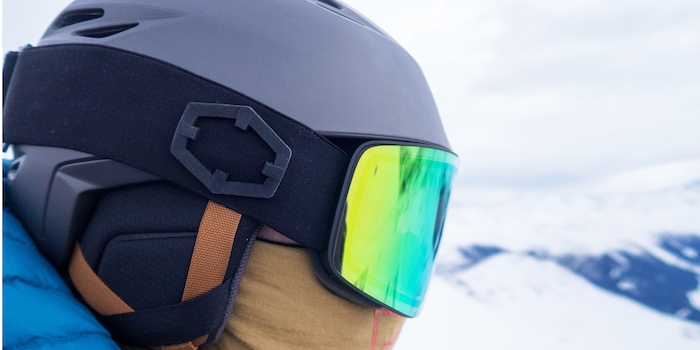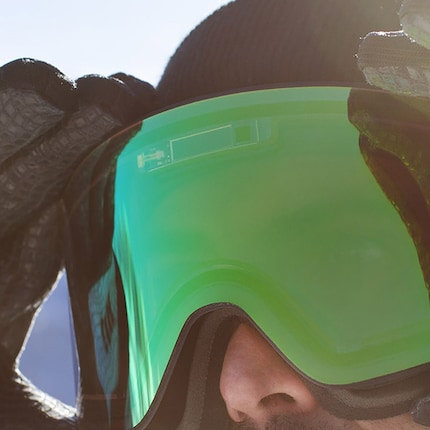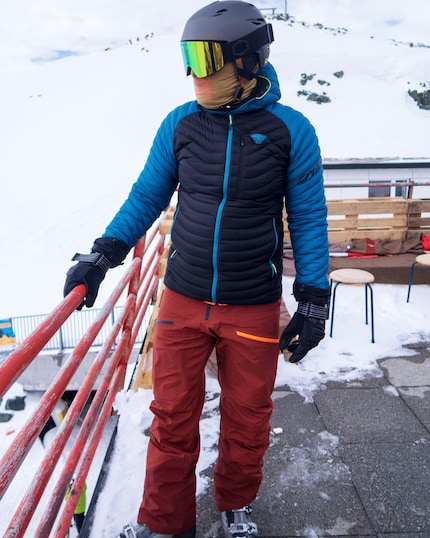
Product test
Spherical mips and toric shapes: High-tech from Giro for piste and freeride
by Patrick Bardelli

Last year, the Out Of Electra Black was awarded the gold medal at the world’s largest sports trade fair. A chip in the ski goggles automatically adjusts how much light passes through the lens. Or, in other words, say goodbye to annoying lens changes at the edge of the piste.
Skiing in the sunshine is awesome. In foggy conditions, however, it becomes a different sport. For me at least. If I can no longer see the contours in the snow, my skiing style becomes passive and I lean back more quickly, losing control of my skis. The result? It’s less fun, much more strenuous and the risk of injury increases. That’s why good ski goggles are an essential part of your equipment. But which ones are good?
Different manufacturers have different models with sophisticated technologies. But they all have one goal: good visibility in all conditions. Giro, for example, makes ski goggles with a toric lens. Toric, from the Latin torus, means cylindrical or barrel-shaped. In optometry, it means that the refractive power of a lens is not [rotationally symmetrical]((https://www.studienkreis.de/mathematik/symmetrie-figuren-erklaerung/) (in Germany).
The fair-weather lens is used when the sun is shining, and the lens for poor visibility when it’s cloudy. And in changeable conditions? That’s when the fumbling around starts at the edge of the piste or on the chairlift: gloves off, rucksack off, spare lens out, etc. It takes a while before everything’s back in its place and you can get back underway. It’s an annoying interruption. And, depending on the conditions, you can end up doing it several times a day when you’re skiing.
Out Of has another solution to the problem of changing visibility: a chip and an LCD lens. The chip works continuously to adapt the light transmission of the LCD glass to the ambient light. It doesn’t need battery power; a small solar cell supplies the chip with the necessary energy.

This works amazingly well and the goggles adapt to lighting conditions in fractions of a second. When the sun shines, they darken; when clouds roll in, they brighten. Last year, the Italians’ new technology won the gold medal in the winter sports category at ISPO, the largest sports trade fair in the world.

And we’re back to talking about price, or rather our own value system. Are you willing to invest over 400 francs in ski goggles? They may be very good ski goggles, with innovative technology that actually works. But they’re still just ski goggles.
Yes? No? If so, why? And, if not, why not? Personally, I have to say yes. Skiing is expensive, and skiing in Switzerland is usually very expensive. Depending on where you go, a day in the snow can easily cost three figures per person. Then there’s all the equipment, from skis and ski boots to underwear, ski helmets and goggles. We’re soon up to a few thousand francs. So now it’s time to weigh everything up: if I treat myself to expensive ski pants from Ortovox, I can’t justify the expensive ski goggles from Out Of. Or the other way around.
Or to put it simply: yes, I’d like these goggles. They really impressed me on my two test days. But first I have to save up after buying expensive ski pants last winter, among other things. But who knows, maybe the Electra Black will soon be available with a bit of a discount. Hello, Black Friday.

From radio journalist to product tester and storyteller, jogger to gravel bike novice and fitness enthusiast with barbells and dumbbells. I'm excited to see where the journey'll take me next.